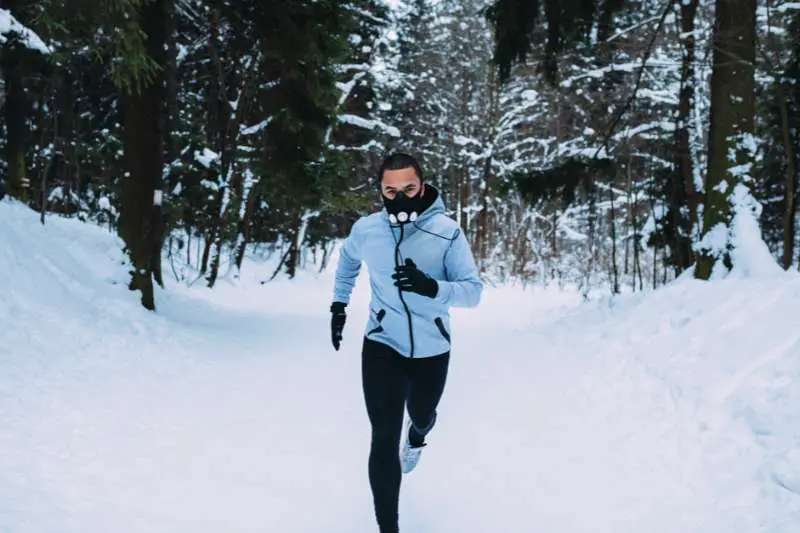What to wear running temperature chart guides attire choices based on weather conditions. It ensures comfort and safety for runners across various temperatures.
Selecting the right outfit for your run can significantly impact your performance and enjoyment. Weather plays a crucial role in how our bodies react during physical exertion. A running temperature chart simplifies this decision-making process, offering suggestions from hot to cold climates.
This valuable tool helps runners of all levels avoid overheating or underdressing, which can lead to discomfort or health issues. Understanding the balance between breathable fabrics and necessary insulation is key to maximizing your running experience. This guide serves as a quick reference to keep your focus on the run, not the weather.
Running Apparel For Different Climates
Selecting the right fabrics is important for comfort while running. Synthetic materials like polyester and nylon wick moisture away. They keep runners dry and warm. Natural fibers like cotton can retain moisture. This leads to discomfort and potential chafing. Merino wool is an exception. It’s both breathable and moisture-wicking.
Understanding layering is essential for adapting to different temperatures. Start with a moisture-wicking base layer. It should be snug against the skin. Add an insulating middle layer, such as fleece, in colder conditions. Top with a protective outer layer. This layer should shield against wind and rain. Each layer serves a purpose. Together, they provide optimal temperature regulation.
What to Wear Running Temperature Chart Breakdown
- Dressing for hot weather running requires breathable, moisture-wicking fabrics. Opt for light colors to reflect the sun’s rays.
- Selecting shorts and a tank top will help keep your body cool. Don’t forget a sun hat and sunglasses for protection.
- Cold weather running demands layers for insulation. Start with a thermal base layer to retain body heat.
- Add a mid-layer like a fleece for extra warmth. Finish with a weather-resistant outer layer to shield against wind and precipitation.
Seasonal Running Tips
Summer Strides should be light and airy. Choose moisture-wicking fabrics to stay dry. Opt for light-colored, loose-fitting clothing. This helps to reflect the sun’s rays rather than absorb them. Sun protection is crucial. Always wear a hat or visor and sunglasses. Remember to apply sunscreen to exposed skin.

Winter Running Tactics require layers for insulation. Start with a sweat-wicking base layer. Add an insulating layer, like fleece, for warmth. Your outer layer should block wind and repel water. Protect extremities with gloves and a warm hat. Reflective gear is a must for shorter daylight hours.

Weather-specific Running Accessories
Equipping yourself for a run means considering the weather. Protective gear is essential for safety and comfort.
- UV-blocking sunglasses shield eyes from harsh sunlight.
- A breathable hat can prevent sunburn on the scalp.
- Apply sunscreen liberally to exposed skin to fend off burns.
Chilly conditions require additional layers. Keep extremities warm with:
- Thermal gloves to maintain hand warmth.
- Insulated headbands cover ears against the cold.
- A neck gaiter can serve as a face shield.
Listening To Your Body
Listening to your body is crucial while running in varying temperatures. Overheating can occur if you’re not careful, especially in warmer climates. Stay alert for symptoms like excessive sweating, dizziness, and nausea. These are warning signs that your body is struggling to regulate its temperature.
On the colder end of the spectrum, hypothermia is a risk. Shivering, slurred speech, and shallow breathing should not be ignored. They indicate your body is losing heat faster than it can produce it. Always dress appropriately for the temperature to minimize these risks.
Frequently Asked Questions
What To Wear Running Based On Temperature?
Dress in layers for cold runs; opt for moisture-wicking fabrics when it’s warm. Below 40°F, wear insulated gear; between 40-60°F, choose long sleeves. For temperatures above 60°F, select shorts and a t-shirt. Always consider personal comfort and adjust for wind chill or humidity.
What Should I Wear To Run Degrees?
Dress in moisture-wicking fabrics for comfort and layer clothing to adjust to changing temperatures during your run.
What Do You Wear To Jogging In 50 Degrees?
For jogging in 50 degrees, wear light layers, a breathable long-sleeve top, and leggings or running pants. Consider a light jacket, gloves, and a cap for comfort. Choose moisture-wicking fabrics to stay dry and comfortable.
Is 50 Degrees Good For Running?
Yes, 50 degrees Fahrenheit is ideal for running. This temperature balances cool air for comfort and warm enough conditions to prevent muscle stiffness. Perfect for outdoor jogs, it minimizes overheating and sweating. Always dress in layers to adjust easily as you warm up.
Conclusion
Selecting the right outfit for your run doesn’t have to be complex. Our temperature chart simplifies this decision, ensuring comfort and performance in any weather. Remember, the key is layering and material choice. By following our guide, you’ll be ready to hit the ground running, rain or shine.
Stay motivated and dress smartly for success. That’s the wrap up for what to wear running temperature chart guides.


